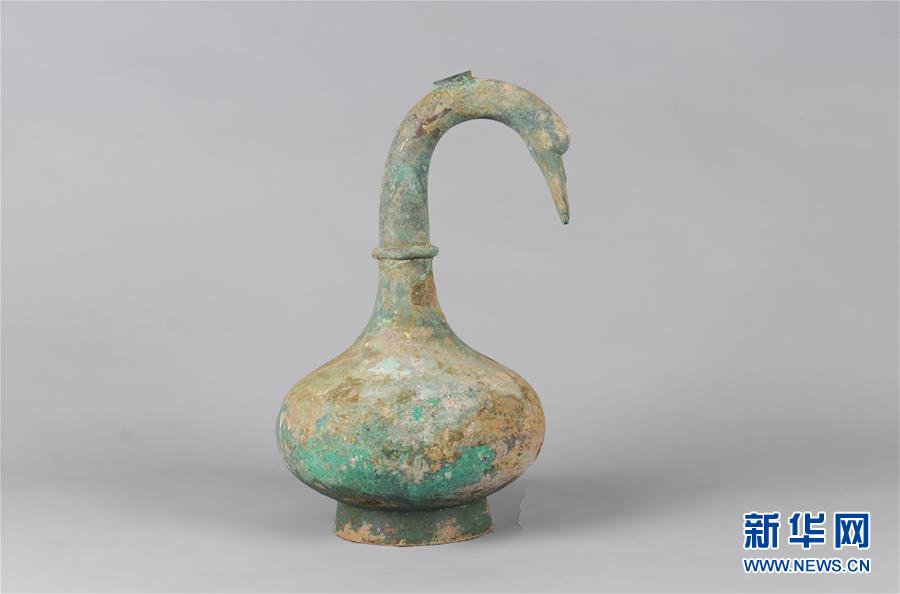

After testing, Chinese researchers have confirmed that the 3,000 ml of unknown liquid found in a bronze pot unearthed in central China’s Henan province is alcohol dating to the early Western Han dynasty (206 B.C. - A.D. 24).
In a tomb in the city of Sanmenxia, archaeologists discovered the pot with a curved neck in the shape of a swan this May.

The pot in the shape of a swan. (Photo courtesy of Sanmenxia’s Institute of Cultural Relics and Archaeology)
Researchers from the University of the Chinese Academy of Sciences (UCAS) also found that the alcohol was similar to the medicinal liquor recorded in an ancient medical book discovered in the Mawangdui Tombs of the Han Dynasty in Changsha, central China’s Hunan province.
Testing will continue, including a nitrogen isotopic analysis, to obtain more information on raw materials, production processes and functions of the ancient alcohol, according to Yang Yimin, a professor with the Department of Archaeology and Anthropology University under the University of the Chinese Academy of Sciences.
“A bronze pot of this kind is rarely seen. The test report from the sample indicates that the pot was used to hold alcohol,” said Zheng Lichao, head of Sanmenxia’s Institute of Cultural Relics and Archaeology.
From the tomb, a bronze mirror, a bronze basin and swords made of iron and jade were also unearthed by archaeologists.
 Fire brigade in Shanghai holds group wedding
Fire brigade in Shanghai holds group wedding Tourists enjoy ice sculptures in Datan Town, north China
Tourists enjoy ice sculptures in Datan Town, north China Sunset scenery of Dayan Pagoda in Xi'an
Sunset scenery of Dayan Pagoda in Xi'an Tourists have fun at scenic spot in Nanlong Town, NW China
Tourists have fun at scenic spot in Nanlong Town, NW China Harbin attracts tourists by making best use of ice in winter
Harbin attracts tourists by making best use of ice in winter In pics: FIS Alpine Ski Women's World Cup Slalom
In pics: FIS Alpine Ski Women's World Cup Slalom Black-necked cranes rest at reservoir in Lhunzhub County, Lhasa
Black-necked cranes rest at reservoir in Lhunzhub County, Lhasa China's FAST telescope will be available to foreign scientists in April
China's FAST telescope will be available to foreign scientists in April "She power" plays indispensable role in poverty alleviation
"She power" plays indispensable role in poverty alleviation Top 10 world news events of People's Daily in 2020
Top 10 world news events of People's Daily in 2020 Top 10 China news events of People's Daily in 2020
Top 10 China news events of People's Daily in 2020 Top 10 media buzzwords of 2020
Top 10 media buzzwords of 2020 Year-ender:10 major tourism stories of 2020
Year-ender:10 major tourism stories of 2020 No interference in Venezuelan issues
No interference in Venezuelan issues
 Biz prepares for trade spat
Biz prepares for trade spat
 Broadcasting Continent
Broadcasting Continent Australia wins Chinese CEOs as US loses
Australia wins Chinese CEOs as US loses